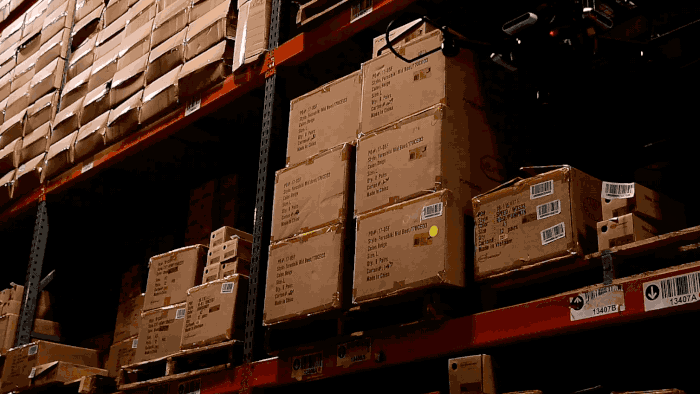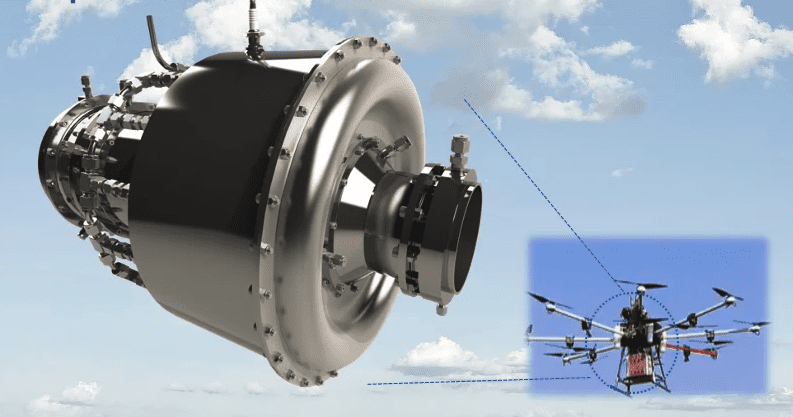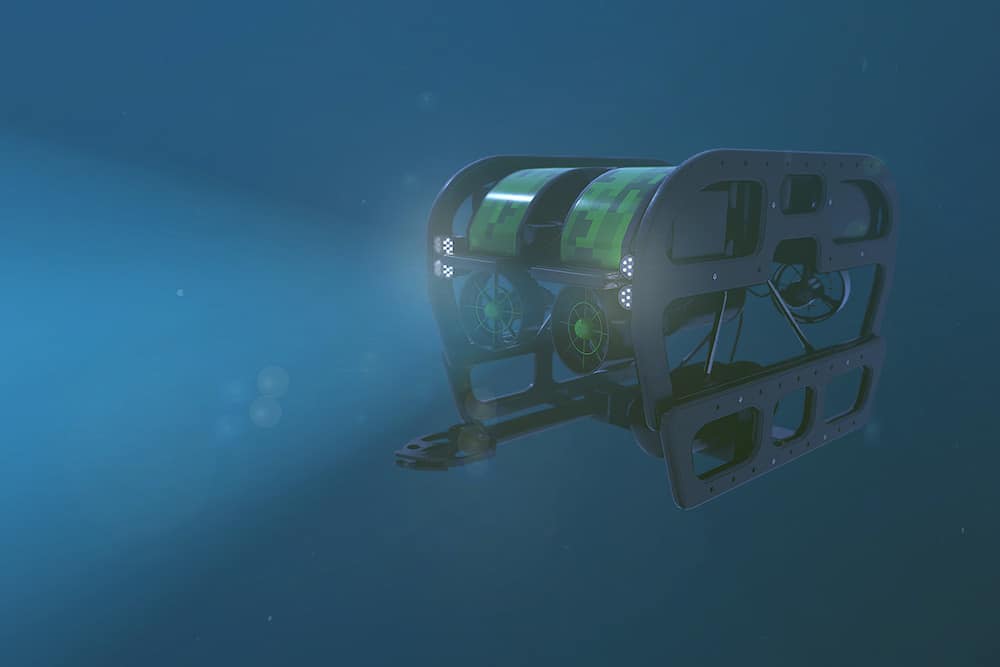Corvus is Using Drones to Track Warehouse Inventory –
Corvus运用无人机追踪仓库库存.

In August of last year, Corvus launched Corvus Robotics. The Boston-based firm is one of a handful of startups looking to leverage indoor drones to help warehouses keep track of inventory. It’s a clever solution that’s been thus far difficult to achieve solely with wheeled robots, which have quite a bit of trouble reaching those top shelves.
去年八月,Corvus推出了Corvus Robotics。这家波士顿公司立足于利用室内机器人为仓库追踪库存,定位于此的无人机企业屈指可数。这是一个聪明的解决方案,但是仅用轮式机器人是很难做到的,因为这些机器人无法探测到顶部货架的数据。
Corvus is positioning its product as the “first unmanned warehouse inventory drones to enable fully automated inventory management,” though the company is far from alone in its solution. It did, however, just get a nice leg up in the form of a $5 million seed round, led by Spero Ventures and featuring S2G Ventures, One Way Ventures, Flight Ventures and F7 Ventures.
Corvus的产品定位是打造首批可全自动管理库存的无人仓库库存无人机,但是该公司在这一方案上并非其一家孤军奋战。他们近期获得了一笔五百万美金的种子融资,由Spero Ventures领投,S2G、One Way、Flight和F7 Ventures参投。
Corvus’s drones are custom built for the job, featuring indoor obstacle avoidance and the ability to read barcodes, even in low-light warehouse conditions. The systems also feature an on-board autonomy stack, so they can keep operating even in poor Wi-Fi conditions — which are a bit of a constant in these sorts of settings
Corvus无人机是为工作定制的,具有室内避障和读取条形码的功能,即使在光线弱的仓库环境下,这些功能也可实现。该系统具有机载自主性堆栈,所以就算在无线网络信号极其弱的情况下也能正常运行---上述的两种情况都是仓库非常常见的环境条件。
The round brings the company’s full funding to date up to $8 million.It’s largely going toward scaling the technology and advancing R&D. Among other things Corvus is looking to move its offering beyond simple storage, tracking inventory from the moment it enters to the time it leaves.
本轮融资使得该公司的全部资金迄今为止已达到了800万美金。它大部分是用于扩展技术和推进研发。Corvus希望其提供的服务不是仅限于简单的存储,而是追踪库存从进入仓库到出库的全部数据。
Mass Produced Hybrid Power System for Large Drones to be Showcased
大型无人机混合动力系统即将揭开面纱

Aero Development Japan Co., Ltd. (ADJ) has succeeded in developing a mass-produced model of a hybrid power system and will start accepting pre-orders. ADJ will showcase the hybrid power system at the Japan Drone exhibition held at Makuhari Messe, Japan from June 21st to 23rd, 2022.
日本航空发展有限公司(ADJ)已经成功开发了一个可批量生产的混合动力系统模型并开始接受预订单。 ADJ将会于2022年6月21-23日在日本千叶幕张国际展览中心举办的日本无人机展,展示该系统。
The market for large drones and flying cars is growing in countries around the world, including Japan, but there are major challenges for practical use concerning power sources. Often lithium-ion batteries, which have been used as a power source for smaller drones, cannot be said to have sufficient power generation (kWh / kg) per unit weight for larger drones to fly for a long time. Increasing the flight time reduces the payload, and increasing the payload reduces the flight time. Against this background, there has been a demand for the development of power sources with higher output per unit weight.
如今世界各国包括日本对于大型无人机和飞行汽车的需求逐渐增长,动力来源是主要挑战。锂离子电池是小型无人机的动力源,但是对于较大型的无人机来说锂离子电池不足以支持其长时间飞行。增加飞行时间会减少载荷,增加载荷则会缩短飞行时间。因此,我们需要发展动力来源以使得每单位重量有更高的动力产出。
To solve this problem, ADJ has developed next-generation power sources for large drones and flying cars. It is a hybrid power system that combines a gas turbine and a small generator. The approach of rotating the gas turbine at high speed (90 to 100,000 rpm) to drive the generator can increase the amount of power generated per unit weight. It is calculated that ADJ’s hybrid power system can exceed 1kWh / kg, while the amount of power generated per unit weight of a general lithium-ion battery is about 0.2 to 0.25kWh / kg (ADJ estimate). ADJ aims to extend both flight time and payload with the amount of power generated per unit weight, which is about five times that of a lithium-ion battery.
为了解决这个问题,ADJ为大型无人机和飞行汽车发展了新一代动力源。这个混合动力系统由一个燃气涡轮机和一个小型发动机组成。通过高速旋转燃气涡轮机来开启发动机可以增加每单位重量产生的动力。ADJ的混合动力系统燃烧热值预计可超每千克一千瓦时,而一个普通的锂电池每单位重量产生的动力只有大约0.2-0.25千瓦时/千克(据ADJ预估)。ADJ打算以锂电池五倍的单位重量力发动量同时延长飞行时间和载荷。
New Industry Standard for Underwater Wireless Acoustic Communication
水下无限声讯的新型工业标准

Subsea Wireless Group (SWiG), an international oil and gas industry network, has launched a new wireless acoustic standard to help improve communication between offshore vessels and the vehicles used in underwater inspection, maintenance and repair.
国际油气工业网络公司SWiG,推出一个新型无线声讯标准以促进海上船舶与用于水下探测、维修的船辆之间的交流。
SWiG addresses problems related to the increasing diversity of communication systems used by Autonomous Underwater Vehicles (AUVs). Its new standard, SWiGacoustic, provides a simple acoustic protocol that satisfies interoperability requirements, aiding seamless communication between platforms.
SWiG解决了关于水下无人船只通讯系统多样性逐增所带来的问题。其新标准,SWiG声讯,提供了一个简易的声讯协议,满足了互用性需求,促进平台间的无缝交流。
“Subsea vessel and vehicle operators use various wireless technologies, from radio frequency and acoustic to inductive power and data as well as free space optics and hybrid solutions,” Shreekant Mehta, Senior Vice President, Energy Sector at Sagentia Innovation, said. “These technologies are complementary and perform different functions in different subsea environments and applications. However, without a common acoustic standard it’s difficult to achieve the interoperability needed for joined-up monitoring and control. SWiGacoustic solves this problem.”
Sagentia Innovation动力部高级副部长Shreekant Mehta表示“海底船舶操作者运用各种各样的无线技术,包括射频、声讯、感应起电以及自由空间光束和混合型解决方案,这些技术互补,在不同的海底环境和应用中发挥不同的功能。但是没有一个共同的声讯标准,就很难达到互用性,以进行共同操控。 SWiG解决了这一问题。”






